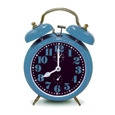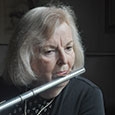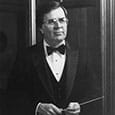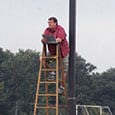When flutists enter college, they are bombarded with new information in every class. The immediate problem is to sift through the material, deciding upon a hierarchy of importance. As I reflect back on my studies, there were two days in music theory that I wished the professor had said, “This is really important, so pay attention, because you will use this information every day of your musical life.”
The first item was discussed on the second day of theory class. I should have realized the importance of this topic because it occupied 36 pages in Part 1 of my Basic Principles of The Technique of 18th and 19th Century Composition by Allen Irvine McHose, better known as the Theory I textbook.
Part 1 was subtitled “The Elements of Time and Rhythm,” and the chapters had titles such as The Beat, Meter, Elementary Time Durations in Simple Time, Durations with Compound Beat, Subdivision of the Simple Beat into Four Divisions, Further Study of the Tie, Syncopation, Superimposed Backgrounds and Superimposed Meters, etc. Like my fellow performance majors, I questioned the relevancy of studying these topics. I understood rhythm. I could subdivide. I had a good sense of pulse, and thanks to a band director, who had tortured us with daily rhythmic studies for all three years of high school, I could sightread just about anything in any key.
Looking back I wish my theory professor had said, “Attention all performance majors, this will be something you will use throughout your performing life. You may think you understand this, but until you think about and execute this every time you play, this topic is not yours.” He would have gotten my attention, and hopefully I would have put his brilliant words to use much earlier in my career. So what were these words of wisdom?
McHose wrote, “From a standpoint of rhythm, not all beats in a measure are found to be of equal importance. In a duple measure, the first beat is heavier than the second. In a triple measure the first beat is heavy, the second beat is less heavy, and the third beat is light. In a quadruple measure the first beat is heavy, the second beat is light, the third beat is less heavy than the first, and the fourth beat is the lightest beat.” This thesis is also put forward in the current day theory text Tonal Harmony: With an Introduction to Twentieth-Century Music by Stefan Kostka and Dorothy Payne, page 30.
As a student I remember reading this chapter thinking, “Yes, I know this.” However, I can honestly say that if I had followed McHose’s suggestions, I would have played more musically than I did. Unfortunately it took years before I wisely followed his advice. These rhythmic rules hold true for playing music of the Baroque Era, Classic period, contemporary neo-classic composers, and marches. Composers know these rules too and expect us to apply them when performing their music.
With the increasing interest and scholarship into music of the 17th and 18th centuries, today’s performers are more cognizant of the strength of the beat rule than musicians were in the past. When this rule is applied to performance, the dance-like character of music comes alive.
The other moment in theory class that I wish the professor had issued a wake-up call about came a few months later when we arrived at Chapter 20, The Non-Harmonic Tones. According to McHose, “Two kinds of tones appear in a musical fabric. The tones which form the accepted harmonic elements of any period are called Essential Tones. All other tones in the musical fabric are Unessential. In the 18th and 19th centuries the essential tone is a member of a chord, and it is called a Harmonic Tone. A Non-Harmonic Tone is one which is not found in the harmony, but is related stepwise to a tone in the harmony.” Modern day theorists like Kostka and Payne have exchanged the term Non-Harmonic Tone for Non-Chord Tone. Whatever you wish to call it, identifying these tones will help you know which notes to color in a melody.
As performance majors, my classmates and I did not lack confidence in our playing abilities. If you had asked any one of us, “Do you play musically,” without a doubt we would have all said yes. Unfortunately the method we employed to play musically was trial and error. We played a melody through, and then like rats on a treadmill, we played it over and over again until the melody sounded plausible. Was the finished product truly better? Probably not, but it was certainly different each time we played it.
I still wonder what would have happened if the theory professor had announced, “the topic of this class is how to play a melody,” and continued with “as you examine each note, observe whether the note is a member of the chord or not. If it is not, then circle and label the non-chord tones. These are the notes that add spice and tension to a melody and are the ones you should pay special attention to when sculpting and coloring the melody.” He would have had my attention.
Instead, we were taught the names and definitions of the non-chord tones and were assigned Bach Chorales to search for non-chord tones to circle and label. So, we searched, circled, and labeled with a total disconnect from our playing because chorales were for theory and never played on the instrument.
I regularly ask students what they are studying in theory and how these topics can be applied to their musical performances. In the case of non-chord tones, I have students take a Baroque sonata and analyze it by first identifying the non-chord tones in the melody. In order to figure out which notes are chord tones and which are not, they check the score (see www.imslp.org) to see how each melodic note is harmonized. Just as in analyzing a Baroque chorale, students circle the non-chord tones and check the definitions (see sidebar) to label the non-chord material, using PT for the passing tone, NT for neighboring tones, SUS for suspensions, RET for retardation, APP for appoggiatura, ANT for anticipation, ET for escape tone, and CT for changing tones.
Another rule to consider is whether a non-chord tone falls on a strong or weak beat. Unaccented non-chord tones are ones that occur on a weak beat. These include passing tones, neighboring tones, escape tones, and anticipations. Accented non-chord tones are ones that occur on a strong beat. These include passing tones, neighboring tones, suspensions, retardations, and appoggiaturas. It is the accented non-chord tones that should be emphasized by playing the note louder, softer, slightly longer, with faster vibrato or a change of color (more or less core). Some concert violinists actually raise the pitch a few cents on the climatic moments of a melody, but are careful to return to the pitch level quickly; otherwise the entire orchestra rises in pitch with them. Then the color notes are no longer special.
As I reflect back, I know my theory professor had the best intentions; however, I am pretty sure he never related what was happening in the 17th and 18th century to the music of our time that we were performing. Modern theory texts have recognized this issue and now include musical examples from all style periods. However, as a teacher, I will continue to ask students how their theory studies relate to music-making – just in case.
* * *







